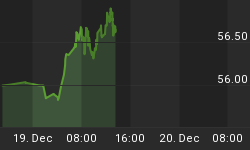On Tuesday, the Federal Reserve shocked investors by not only cutting the target Fed Funds rate by 25 basis points but dropped the discount rate by the same amount. It was universally accepted that the discount rate would be reduced by 50 basis points, or even 75 basis points, to help restore inter-bank lending. Investors were also looking forward to the Fed moving toward an easing bias. They didn't get that either. Instead the Fed just dropped that language, which intensified the uncertainty. Merrill called it the "least amount realistically possible" and the decision emboldened Richard Berner, Morgan Stanley's chief economist, with his recession call made the day earlier.
On Wednesday, the Fed issued a statement that it will auction off 28-day funds to "generally sound" deposit-taking institutions and will accept the same "wide variety" of capital that banks can use at the discount window. The hope is that this will be a more popular venue for the Fed to inject needed liquidity and aims it directly at the interbank market, where it is desperately needed. The Fed also established foreign exchange swap lines with the ECB and the Swiss National Bank. This is aimed at helping European banks access to US dollars. These measures were greeted enthusiastically by the market, until the market opened. The S&P 500 jumped up almost 25 points within the first ten minutes of trading and started a precipitous fall that had the market in the red with only fifteen minutes left in the trading day before mustering a rally to finish up almost nine points.
The economy is clearly slowing down. Heck, the Fed even noticed it. The press release following the FOMC meeting said that "incoming information suggests that economic growth is slowing." It cited "the intensification of the housing correction and some softening in business and consumer spending." The Wall Street Journal reported this week that its survey of economists found on average economists put the odds of a recession at 38%, not only the highest in three years, but a significant increase from the 33.5% just last month. Fourth quarter GDP is expected to rise only 0.9%, down from 1.6% last month. Six of the 52 economists surveyed expect the economy to contract or post no growth this quarter. Morgan Stanley's chief economist, Richard Berner, is one of those economists that has changed is forecast and now expects "domestic demand to contract by an average 1% annualized in each of the next three quarters."
Everyone knows that the consumer is the driving force behind the American economy. The latest consumer confidence numbers do not instill much confidence in the future health of the economy. The University of Michigan index of consumer sentiment dropped 1.6 points to 74.5. Excluding the post-Hurricane Katrina drop, this was the lowest the index has been since October 1992. The weekly ABC News consumer comfort survey confirms this trend. While the index rebounded one point last week, it has dropped two points since the last week of November and eight points over the past five weeks. The concern over consumer confidence lies in the need for consumers to continue purchasing in order for the economy to avoid recession. The buying climate component of the ABC poll did gain two points last week, but the first week of December marked the lowest level since October 1993, when the economy was coming out of the latest consumer recession.
According to the ICSC, November chain store sales increased 3.5%. This was better than the 2.5% increase forecasted and was the largest increase since March, which benefited from the Easter shift. Excluding March, November sales were the strongest since June 2005. The Commerce Department reported that retail sales increased 1.2% in November and jumped 6.9% compared to last year. While gasoline sales had a large impact, up 25.4%, retail sales excluding gasoline, building materials and autos rose 7.2%. While retail sales appear to have been decent in November, recent data points to a more tepid consumer. Chain store sales dropped below 3% last week according to the ICSC and ShopperTrak RCT reported that retail sales fell by 2.7% for the week ended December 8, compared to last year. Analysts are expecting a surge of procrastinators during the next two weeks, but that will likely crimp retail margins as retailers will start being more promotional as the end of the holiday season nears.
On Thursday, the Labor Department reported that producer prices rose 3.2% in November and soared 7.2% year-over-year. The year-over-year increase was the highest increase since October 1981. Economists were expecting prices to increase only 1.5% on a monthly basis and increase 6.0% compared to last November. These higher than expected inflation data came a day after the Labor Department reported that import prices rose 2.7% in November from the previous month and 11.4% from last November. The year-over-year increase was the largest increase since the at least 1983.
If the Fed was aware of the increase in producer prices and the consumer prices data, the Fed might have realized that it is navigating difficult waters. With inflation ticking up and the dollar under pressure, the Fed might not have the room using traditional monetary tools and has to utilize unconventional methods. The plan that the Fed instituted would have a chance if the reason for the economic slowdown was due only to the freezing of credit. The fact is that there was a housing boom that put people in homes that couldn't afford them and that boom helped fund consumer spending. So now, not only are there very few marginal home buyers, they already own, but there will be a large number of existing homeowners that will not be in the future. This is the unwinding that will pressure economic growth; the liquidity crisis amplified how quickly the problems surfaced.















